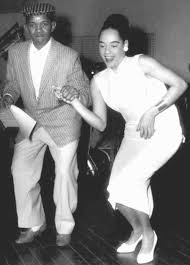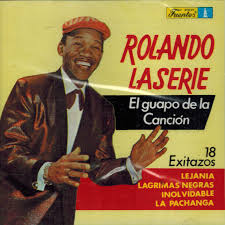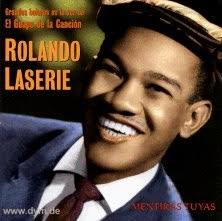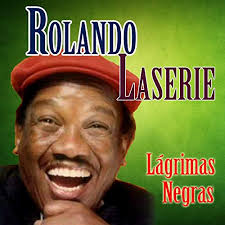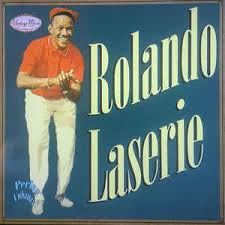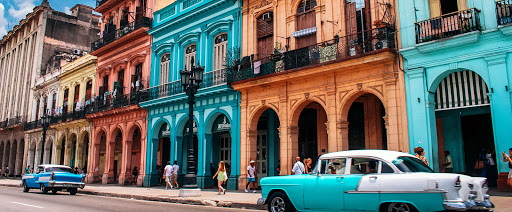ROLANDO LA SERIE, UN POPULAR CANTANTE QUE AUN VIVE EN LA MEMORIA CUBANA.
Un cantante, músico y artista cubano, Rolando La Serie dejó una marca indeleble en la historia de la música popular cubana. Nacido en Mata, Santa Clara, Las Villas, Cuba, el 27 de agosto de 1923.
A los 9 años, Rolando aprendió a tocar la percusión y era obvio que tenía un gran oído para la música y los ritmos afrocubanos. Cuando era adolescente, fue lo suficientemente bueno como para tocar con la Banda Municipal de Santa Clara y la famosa Orquesta Arcaño.
En 1946 decidió probar suerte en La Habana y se convirtió en el percusionista de la Orquesta Hermanos Palau, luego se mudó a la popular Banda Gigante de Beny Moré en la que tocaba “timbales” y cantaba voces de fondo.
https://youtu.be/DQgpXzjcETw
Poco a poco, Rolando se dio cuenta de que tenía una voz para cantar con un sonido único y decidió que podía expresarse mejor como vocalista. Con la ayuda del músico y arreglista Ernesto Duarte, Rolando definió un estilo de canto que, al principio, era controvertido, pero demostraría ser extremadamente comercial. Duarte le presentó a su compañero Guillermo Álvarez Guedes, un actor convertido en magnate de la grabación, y juntos grabaron a Rolando en un bolero titulado “Mentiras tuyas”. Tan pronto como se lanzó el single, los DJ de radio comenzaron a tocarlo, y al público le gustó tanto que vendió 30,000 copias en pocos días.
Siguieron más grabaciones y nació una superestrella. Rolando tenía una gran voz abierta que era “ligeramente ronca y agresiva” según el New York Times, pero lo más importante, vivía la letra de sus canciones y transmitía sus sentimientos con una bravuconada tan resuelta que el público no podía evitar verse afectado. Para resaltar el mensaje de una canción, Rolando incluyó algunas improvisaciones que rápidamente se convirtieron en parte de la cultura popular cubana. Durante su canto, que siempre era dinámico y efervescente, pronunciaba frases como “de película!” que significa “esto es como una película!” o “Mira Esto Tita”, que significa “¿puedes creerlo Tita? (Tita era el nombre de su esposa Gisela, un matrimonio que duró 55 años). Con platos de éxito constantemente en las estaciones de radio que le valían varios discos de oro, estaba en Gran demanda en la televisión, teatros, clubes nocturnos y los hizo todos con venganza.
https://youtu.be/On47sIUCOvE
Si su sonido y estilo hicieron su fortuna en el estudio de grabación, tocar en vivo Rolando Laserie adquirió una dimensión extra. En primer lugar, era su aspecto, siempre elegantemente vestido con trajes de moda, corbatas o lazos a juego, y rematando todo con una gorra traviesa en la cabeza que se convirtió en su marca registrada. También demostró ser un intérprete consumado con su canto acelerado incluso en canciones románticas que fue una maravilla de la improvisación y el sonido. Su ataque y entusiasmo le valieron el apodo de “El Guapo de la Canción” y “El Guapachoso”, que en la jerga cubana se traduce como un cantante valiente o audaz.
En 1959, en la cima de su fama y popularidad, el mundo de Rolando cambió drásticamente casi de la noche a la mañana cuando Cuba cayó en una dictadura comunista. Todas las libertades fueron abolidas en la isla y decidió que no podía vivir bajo la represión y los mandatos del nuevo régimen. Al igual que miles de sus compatriotas, Rolando se exilió, lo que significaba dejar todo lo que había ganado y comenzar de nuevo desde cero. Ayudó a que su nombre y prestigio estuvieran bastante bien establecidos en otros países latinoamericanos y, después de un par de años luchando por relanzar su carrera, Rolando recibió un valioso apoyo de sellos discográficos en México y Argentina.
https://youtu.be/fZcLYSL9yog
Siguió lanzando singles y álbumes que se convirtieron en grandes éxitos y tuvieron largas residencias en varios países de América Latina, siempre con su esposa Gisela a su lado. Realizó giras extensas por todo el continente y España apareciendo en teatros, clubes nocturnos y televisión, ratificando una y otra vez su inmensa popularidad. A medida que pasaba el tiempo, se estableció en Miami, que se había convertido en el centro de la comunidad de exiliados cubanos y donde se sentía más en casa.
Se decía que Rolando nunca superó su tristeza por tener que abandonar su tierra natal, sino que siempre esperó ver una Cuba libre durante su vida. Desafortunadamente, nunca sucedió y Rolando desarrolló una forma de corazón que redujo su actividad artística. Su corazón finalmente se dio por vencido en el Healthsouth Doctors ‘Hospital en Coral Gables, Florida, el 22 de noviembre de 1998, a los 75 años.
Uno de los pocos vocalista cubano que sigue viviendo en sus grabaciones en la memoria de un público fiel.
ROLANDO LA SERIE, CUBAN VOCALISTA THAT LIVES IN THE CUBAN MEMORY.
Cuban singer, musician, and entertainer who left an indelible mark in the history of Cuban popular music. Born in Mata, Santa Clara, Las Villas, Cuba on August 27, 1923. At age 9, Rolando taught himself how to play percussion and it was obvious he had a great ear for music and Afro Cuban rhythms. As a teenager, he was good enough to play with the Municipal Band of Santa Clara and the famed Arcaño Orchestra.
In 1946 he decided to try his luck in Havana and became the percussionist of the Hermanos Palau Orchestra, moving later to the popular Beny Moré’s Banda Gigante in which he played “timbales” and sang background vocals.
Slowly, Rolando became aware he had a singing voice with a unique sound and decided he could express himself better as a vocalist. With the help of musician and arranger Ernesto Duarte, Rolando defined a singing style that, at the beginning was controversial, but it would prove to be extremely commercial. Duarte introduced him to his partner Guillermo Álvarez Guedes, an actor turned record mogul, and together they recorded Rolando in a bolero titled “Mentiras tuyas”. As soon as the single was released, radio DJs began playing it, and audiences loved it so much that the single sold 30,000 copies in a few days.
More recordings followed and a superstar had been born. Rolando had a big open voice which was “slightly hoarse and aggressive” according to the New York Times, but most importantly, he lived the lyrics to his songs and delivered his feelings with such a resolved bravado that audiences could not help but be impacted. In order to highlight the message of a song, Rolando included some ad-libs that quickly became part of popular Cuban culture. During his singing, which was always up-tempo and effervescent, he would utter phrases like “de película!” meaning “this is like a movie!” or “Mira Esto Tita” meaning “can you believe it Tita? (Tita was his pet name for wife Gisela, a marriage that lasted for 55 years). With hit platters constantly playing on radio stations earning him several gold records, he was in great demand on television, theaters, night clubs and he did them all with a vengeance.
If his sound and style made his fortune in the recording studio, performing live Rolando Laserie acquired an extra dimension. First of all it was his looks, always smartly dressed in fashionable suits, matching ties or bows, and topping it all with a mischievous cap on his head which became his trademark. He also demonstrated being a consummate performer with his up-tempo singing even on romantic songs which was a marvel of improvisation and sound. His attack and enthusiasm earned him the nickname ”El Guapo de la Canción,” and “El Guapachoso” which in Cuban slang translates as a valiant or bold singer.
In 1959, at the top of his fame and popularity, Rolando’s world changed dramatically almost overnight when Cuba fell to a communist dictatorship. All freedoms were abolished on the island and he decided he could not live under the repression and mandates of the new regime. Like thousands of his compatriots, Rolando went into exile which meant leaving behind all he had earned and started again from scratch. It helped that his name and prestige were fairly well established in other Latin American countries and, after a couple of years struggling to relaunch his career, Rolando received valuable support from record labels in Mexico and Argentina.
He kept releasing singles and albums that became huge hits and had long residencies in various Latin American countries, always with wife Gisela by his side. He toured extensively throughout the continent and Spain appearing in theaters, night clubs, and television, ratifying time and again his immense popularity. As time moved on he settled down in Miami which had become the center of the Cuban exile community and where he felt more at home.
It was said that Rolando never overcame his sadness at having to abandon his homeland but always hoped to see a free Cuba during his lifetime. Unfortunately, it never happened and Rolando developed a form of heart decease that curtailed his artistic activity. His heart finally gave out at Healthsouth Doctors’ Hospital in Coral Gables, Florida on November 22, 1998, at age 75.
The unique Cuban vocalist stills live through his recordings and in the memory of a faithful public.
Agencies/ IMDb/ RLMiniBio/ Mark Martin / Internet Photos/ YouTube/ Arnoldo Varona/ www.TheCubanHistory.com
THE CUBAN HISTORY, HOLLYWOOD.




